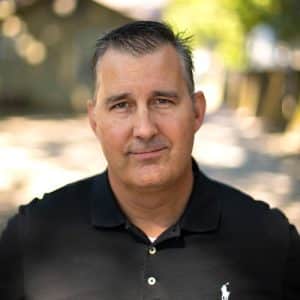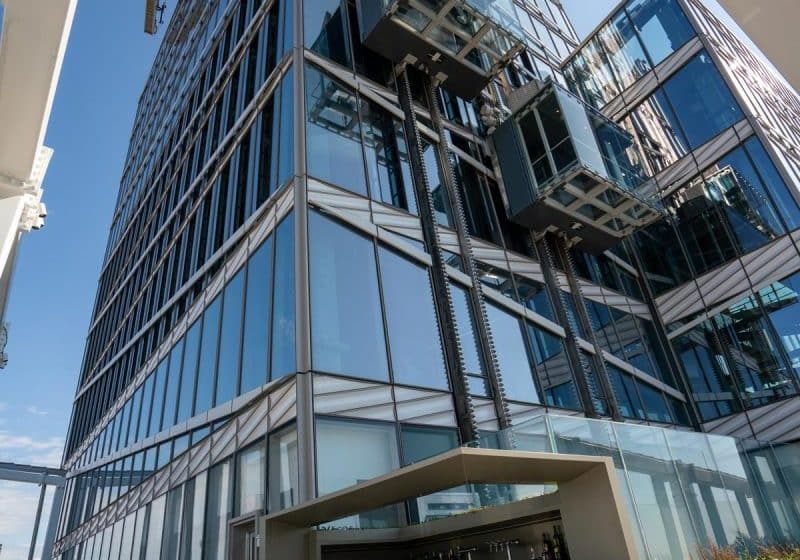Standard Elevator Systems: More Than a Machine Brand
Jan 1, 2022
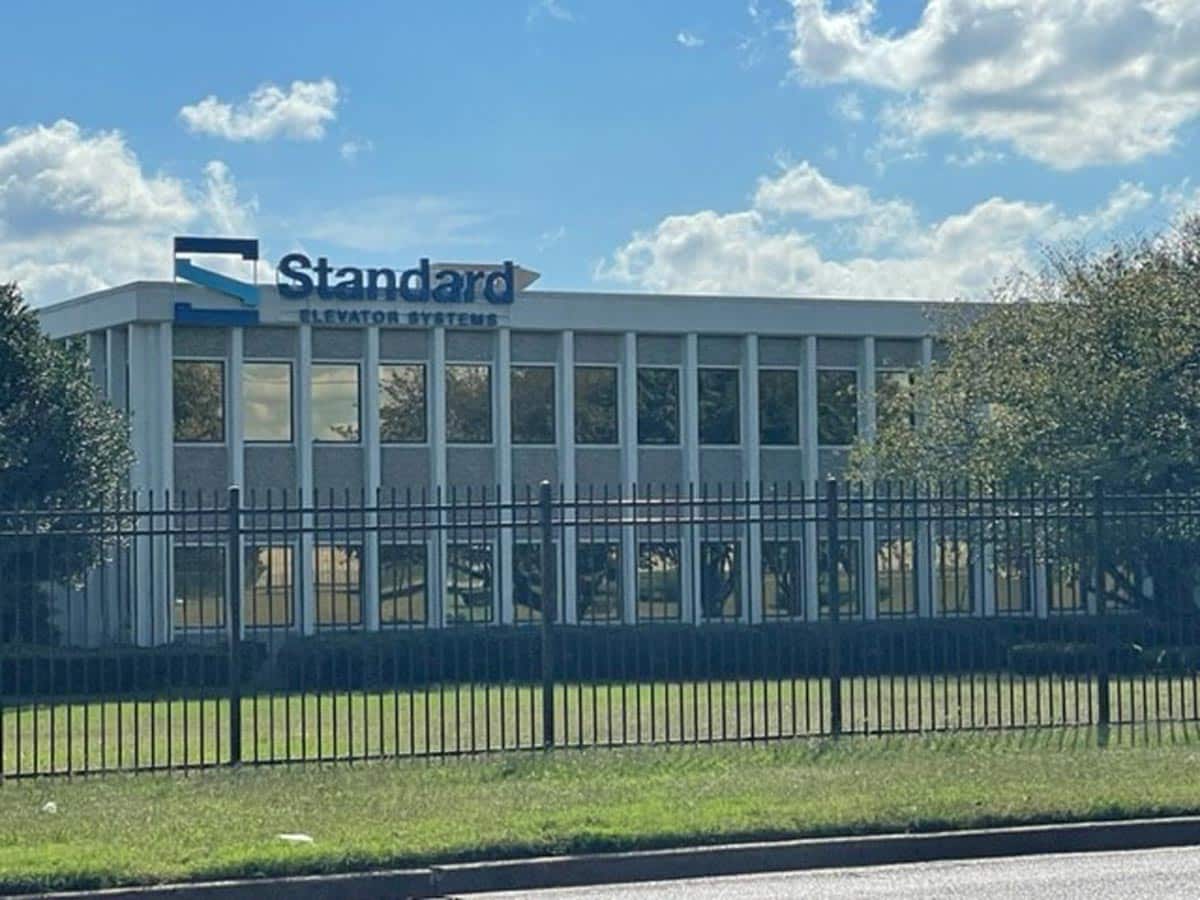
Your author (TBM) visited Standard Elevator Systems to present President Jimmy He (JH) with the 2021 Ellies Award for Best Supplier (Motors/Drives). JH gave TBM a tour of the Standard facility, and the pair discussed the growth of the company, current challenges facing the industry, the importance of technology and more.
The pre-entity of Standard Elevator, Torin Drive International, began in 2007 as a distributorship of Torin Drive Equipment so that a joint project between TK Elevator (TKE) and Torin Drive could be completed. The entity was formally organized in 2008. Then, in 2019, with the business model evolving to deal with more solutions and packages instead of just machines, it was decided to change the name to Standard Elevator Systems to reflect the company’s growth into a comprehensive solution brand instead of just a machine brand.
TBM: Can you expand on why you decided to change the name to Standard Elevator Systems?
JH: Over the years, we had become more of a package provider because our customers wanted us to be more of a single-source solution for their project needs, and 90% of our business is project based. So the people who own the machine will be the same people who own the supporting system — the people who own the deflector sheave, the people who own the governors, roller guides, and all these other things — and scheduling and organizing logistics really is a headache for independent customers, so they really want the benefit of one purchase order. They want somebody who is able to configure the products together for them. That’s why we got into more of a solution, a system business. Torin Drive is known as a machine brand, so that’s why we changed the branding to be more system-based.
TBM: How has your physical location grown over the years?
JH: When we first started, we had a small office; it was a shared office of 180 ft2. Then we grew into five or six offices in the building before moving to a 20,000-ft2 location not too far away from our current facility. We were there for a good five years. Then, in 2018/2019, we moved to this location. We have approximately 35 employees in the U.S. and closer to 100 worldwide.
TBM: What is your mission/vision for Standard Elevator?
JH: I have a picture, actually, of smiling mechanics in the field, so I always tell people that’s our mission. If we can make our product solution easy enough for the field mechanics to feel happy and easy, we did our job.
TBM: What is your top-selling or highest volume product(s) or service(s)today?
JH: Again, it’s all project based, so each project will require different products. Obviously, we still sell a lot of machines. Anything that’s complementing these projects, whatever it may be, smaller components or the supporting systems, these are our key. A lot of our business is in modernization projects.
TBM: What would you consider some of the company’s biggest successes over the years?
JH: We’re very big in automation. Eighty percent of our projects are automated, meaning there is no human touch. Our customer can put project information into the website and, in a couple of minutes, get all the solutions. If it was human operated, typically, it would require hours or days. Automation gives you accuracy, efficiency and ease of purchase. I don’t think anyone in our trade is doing that, but I do believe that’s the direction to go.
TBM: What about AI or virtual reality (VR)? Are you using any of those types of things to develop or sell?
JH: AI is part of our automation process. We use it to help customers decide what solutions and systems are best for their applications. We are looking more into augmented reality (AR) instead of VR. The difference is, for VR you have to wear the hardware. With AR, you just look through the device and see the virtual image. I think AR has a better future in our industry, so we are looking to several active elements using that technology, mainly for field use.
TBM: What’s the biggest challenge the company is facing today?
JH: Obviously, we have the global supply chain crunch right now. Our advantage is based on the Chinese supplier base. Worldwide, 70% of the elevator manufacturing capacity is in China. It would be crazy not to tap into that supply base. But because of that, logistics and planning become very important. Right now, the container and steam ship chaotics, as well as the rail problems, make it very difficult. I think the entire industry has to deal with that, but I believe those things will go away once we’re over this pandemic chaos.
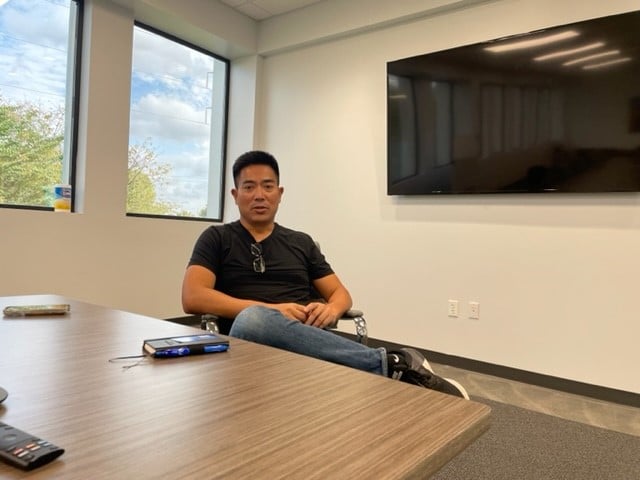
The biggest challenge we face is the same challenge the industry is facing. I think there is a disconnect between the field and the design of the product, especially in North America. We are doing a lot of modernization and custom buildings. Usually, the people in the field are handy and very knowledgeable in terms of how to fix things with simple tools, but sometimes that’s not the most efficient way of doing it. You always want the products to be easy to use, but the guys in the engineering office, typically, are a little bit out of touch with the field worker. So they will design something based on the optimal cost, like from a material manufacturing process perspective, without considering the bigger cost piece, which is in the field.
We have seen crazy design mistakes where people will design something that’s really hard to reach in the field, or a heavy piece of equipment in the factory setting you can use a crane to hoist, but in the building, you have to use the manual hoists, so it’s very different. I think that’s a big problem. It’s creating a bigger gap between these two people. The talent we need in our industry, whether it’s the engineers or field personnel, they need to have both perspectives. That’s the training I think we need.
I have a picture, actually, of smiling mechanics in the field, so I always tell people that’s our mission. If we can make our product solution easy enough for the field mechanics to feel happy and easy, we did our job.
The other challenge is knowledge. There is a knowledge bottleneck right now. When this whole elevator system was designed 100-plus years ago, traction elevators were mainly designed by the oldest guys. These guys were geniuses, but when you look at all those design parameters they put in position, it’s not 100% mathematical. A lot of it is through empirical tests, meaning these guys designed a lot of different testing, collected data, plotted that on the chart, and made a formula to fit it. But, in a lot of situations, the empirical testing situation changed, the base parameter changed. For example, wire ropes today are not the wire ropes they made 100 years ago. The techniques are better. The material is different. Same as, for example, the machine. We use hardened sheaves. We use different things that didn’t exist 100 years ago. So how did that change the formula or change the parameters? At this moment, we’re assuming no change in all the designs. That’s one gap, because I don’t know how many engineers today really understand the fundamentals of those formulas. We are just simply maintaining those formulas: I don’t know why it is; this is how it is, so just go by it. I don’t know how many people are doing a new round of fundamental research, saying in the current setting, “Let’s review those formulas.”
The other thing, for suppliers especially, is that we talk about the challenge for the independent companies and contractors to be trained. CETTM and ELEVATOR WORLD are good resources to train these people, but what about the suppliers? These engineers need training, too. For them, it’s even more difficult. They don’t go to the field every day. They’ve lost the perspective a little bit already, and they’re going by the design principle book, which draws from assumptions that existed 100 years ago. How do they update their knowledge and get trained to be able to really reinvent the elevator, instead of just saying, “I just go by the book”? I think these are the real challenges. At Standard, we are looking to partner with different suppliers to explore different ways to improve on that. Because, unfortunately, even though the supplier by itself is offering things — machines, ropes, doors — separately, in order to design a system well, you need to look at it from a systematic perspective. In order to do those testings or explore those new principles, we have to partner with different suppliers to do that jointly. That’s an effort we are making with some of the other suppliers.
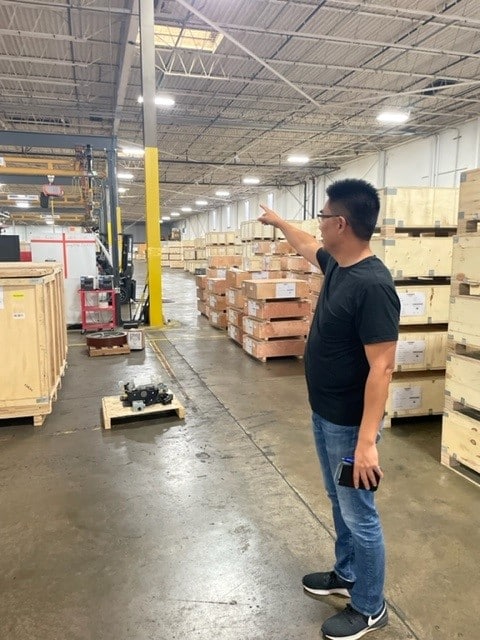

The other challenge is that, by nature, I believe the elevator industry is a long-term business. If you think about it, if you install an elevator, nobody will change anything for 20 or 30 years, but the business world around it has become shorter and shorter term. The new investors coming in, they may have a four- or five-year time horizon or the maintenance contract is usually for one year, so our horizon becomes shorter, which is dangerous in my mind because now we care a little bit less about the longer-term impact. We’re much more focused on the short term, which is against the nature of this product’s lifecycle.
TBM: How has the company dealt with COVID-19? Have you created any new products?
JH: We dealt with COVID really well. Part of it is, several years ago, we decided to put everything on the cloud. When COVID hit, obviously, by regulation, the office people had to go back home. We shut down our office, but it didn’t affect our work at all. We were able to collaborate pretty well.
During that time, it actually helped us to continue developing our automation system. We had a couple of launches in 2020. In the past, most of our industry design was 2D, meaning it’s usually done by AutoCAD. We worked on a 3D automation program, so today if you input a parameter into our system on the website, what you are going to get is a 3D model if you are able to handle a 3D model. I think we are the only ones doing that.
I really think the people who are in this business that should do well and can do well are the people who really care about products, not just numbers. You should really care about the performance of the elevators: its functions, reliabilities, safeties.
We also developed our door system during COVID. Traditionally, in North America, it’s a very old-school door system that mostly independents use because suppliers are limited. The world is miles ahead already. Everybody is using linear door operators on the landing side, and everything is integrated. In North America, we’re still piecemealing things together, so we saw the opportunity and designed this system. We have sold more than 100 installations already.
TBM: Who are your competitors in regards to the Torin Drive?
JH: In the U.S., we compete with Hollister-Whitney and Imperial. Both are very respectable competitors. When we first came into the North American market and were very new, the Glaser family was very friendly to us. Obviously, Hollister-Whitney has a big brand; we don’t feel like a stranger at trade shows, so I always appreciate them for that. At Imperial, I’ve known Gary Ward for many years and respect him very much. He’s such a hard worker and always customer driven. Everywhere I go when I’m signing in for the customer, I always see Gary’s name. In our trade, we’re definitely competing, sometimes very hard, but I feel like everybody is trying to do a good thing for the trade. We just have good people in the trade.
Worldwide, it depends on the market. India is very competitive; we have a lot of European competitors there, as well as local Indian manufacturers. The market is very segmented. India is a bigger market in terms of new installations. They have about 50,000 estimated new installations per year. Over there, our strategy is a little bit different. We are more service and quality driven in the Indian market. In Europe, there are a lot of good brands on the machine side —Italian, Spanish and German brands. But, again, it’s a very segmented market. Each country is different in Europe, so we need to position ourselves right and compete that way.
TBM: What is your largest market?
JH: Right now, for the Standard Elevator System Group, it’s North America.
TBM: You said that you’re always looking to hire people. Has that been a challenge, even before COVID-19?
JH: It’s always a challenge. I think industry-wide and company specific — we’re an aggressive, growing company — we want people to have the same entrepreneurial mindset as ours, which is a little challenging already in this industry because this industry is all about regulation, consultant specs and union. Entrepreneurship, by definition, means you have to be inventing, so for people to have that kind of knowledge with an elevator background is already challenging for us to find. Outside of the industry, you might have more aggressive or entrepreneurial people, but the problem is we scare them away too easily with too much terminology. These are the challenges, and why we continue to look for people who are a good fit.
TBM: What do you think about mergers and acquisitions (M&A) — how that is affecting the industry and what that might look like in the future?
JH: The industry is growing and healthy and will continue to grow. We thought the pandemic was going to slow down urbanization; it doesn’t look like it. We see a lot of apartment buildings still being built. Even in Memphis, the city has a big plan to revive its downtown, and its population is growing. That means the elevator business will continue to grow.
Recently, we’ve seen a lot of different types of M&As. In the past, it was more inside the elevator ecosystem itself — big companies acquiring smaller companies and more entrepreneurs coming out of a big company and starting smaller companies, so it’s a pretty balanced cycle. Now it’s a little bit different.
Now, we have outsiders coming in, including strategic buyers and private equity investors. It’s going to consolidate this industry, at least in North America, so it’s good and bad. The good is that the industry is a relatively small industry, so we have a lot of smaller companies, and a smaller company sometimes means the owner, even for people like me, won’t have enough resources to make sure every corner is covered. You don’t even know what the best practice is sometimes, so any time a company comes in with that professionalism, from a business perspective, that’s good.
I’m just afraid there’s going to be a misalignment of time horizon, because the investment time horizon versus the product lifecycle can be different. I really think the people who are in this business that should do well and can do well are the people who really care about products, not just numbers. You should really care about the performance of the elevators: its functions, reliabilities, safeties. Hopefully, the consolidation is not blind on important things and distracts us so much that we only look at the numbers.
We all make mistakes, and any of those mistakes in the design can cost big time in the field; so we’re truly believing in, and have actually bet very big on, technology over the past seven or eight years.
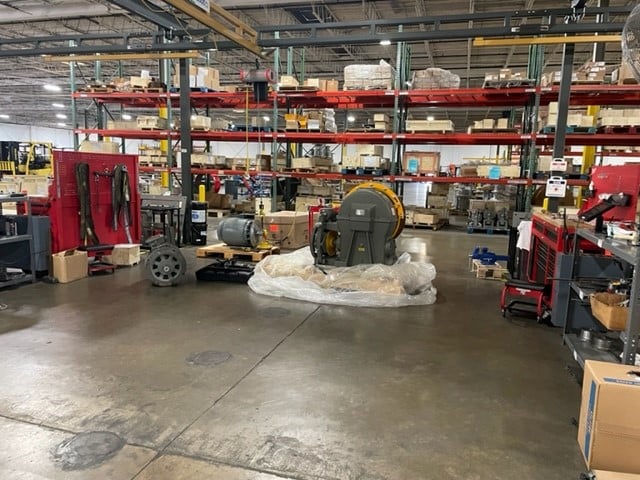
TBM: Anything else you would like to add?
JH: We think technology is very important in our industry, and this industry is traditionally difficult in adopting technology because it’s a very customized industry. If you look at the buildings around us, every building is different and has a different function, whether it’s a hospital, office or residential, high speed or low speed.
And, also, everybody has a different idea of how the cab should look, how the door should look. It makes the elevator a very customized product. When you think about technology in the past, when it was more about standardization, a customized product is not a good fit for that. But, today, with new technology such as AI, customization is the perfect target to apply this technology. If you don’t automate it, there has to be a person behind each individual project. We’re all human beings. We all make mistakes, and any of those mistakes in the design can cost big time in the field; so we’re truly believing in, and have actually bet very big on, technology over the past seven or eight years. I truly believe most of the work — the design or manufacture work — should be done by machines.
On the contrary, we have very specialized applications or problems in our industry. A lot of problems can be caused by human errors in surveying, or in scheduling construction planning, so there’s a lot of uncertainty in our industry. The problem is that we’re all involved so much in the daily chores, we have to deal with the things that can be automated but that we’re not automating. We’re spending very little time dealing with 10% of those very critical problems. My vision is that we should use 10% of our time to deal with 90% of the automatable problems, the standard operations. We should use 90% of resources — our brain power — to deal with those 10% of tough problems. If we don’t use technology, we won’t be able to give enough attention to those really special things, so that’s the direction we’re going, and I think this industry will go that way.
Get more of Elevator World. Sign up for our free e-newsletter.
